By Daniel Mucinskas
The Good Project recently connected with Weilyn Chong, a high school student in Hong Kong who started a program at her school called “Thankful Thursdays” to encourage thankfulness in her community.
Weilyn Chong holding Bubble tea
Since Weilyn started the initiative three years ago, it has been adapted to different school environments and been offered in both Singapore and in Hong Kong.
We had the opportunity to ask Weilyn a few questions about why she started the program and her vision moving forward. Below, we are reproducing our Q&A.
Q: Tell us a little bit about the Thankful Thursdays program. How long has it been in existence? Can you describe the program for us?
Weilyn: Thankful Thursdays has been going on for around 3 years (this year will be its fourth)! Essentially, Thankful Thursdays is a curriculum designed in three different ways.
The first ever Thankful Thursdays program created was a 36-week program designed for my school. This program included short 10-20 minute activities that could be done weekly during homeroom. These activities would include writing cards to family members, emails to our administrators or even random visits to our cafeteria staff to show gratitude.
I then took the program and modified it to cater towards student interests. Every month the homeroom could pick a topic out of the list and create some sort of way to give thanks to that group or discuss that topic in depth.
The third variation of the program is one I designed for businesses to use in the workplace. The idea was to put thankful activities onto stacks of cards that could be placed randomly in offices to spark small movements of gratitude.
Q: What inspired you to start this program? Why is thankfulness important?
The program started out of two major inspirations. The first was less of a inspiration but more of a frustration I had with my school environment and myself. Every day hundreds of students would walk past the same cafeteria staff, guards, and cleaning staff, and not even say a word to these people. Whether it be because a student doesn’t really know what to say or they are in a rush, it probably made these people feel invisible in the school community.
It was this frustration that I came to terms with that made me want to start Thankful Thursdays as a platform for people to connect and give thanks to different groups in our community. I think, in any community, it is important to not make people invisible no matter how busy or how shy we are.
The second huge inspiration to me was my grandfather. My grandfather lives in Singapore and works in a small hawker center selling sodas, sugar cane juice, and ice coffees. Selling each drink for around $1-3 USD, he doesn’t see this as a barrier that stops him from helping the homeless or the needy. Every morning, he wakes up at 4-5AM to cook breakfast for the needy in the community and give them free drinks. I think that this hugely inspired my work because I saw him as one of many hard working people who go largely unnoticed in our community. I hoped that through Thankful Thursdays, my school could become more aware and grateful for all members of our community.
Thankfulness is almost like the glue to society. Whether news outlets, conversations, or social media get most of the attention, we tend to focus on the negative as a society, and giving thanks really serves as an outlet to positivity. A couple studies have been done in the field of gratitude that shed light on trends between people saying words of gratitude and not being able to think negative thoughts at the same time. I like to think about control a lot: who controls what, controlling ourselves and our actions, what we control. Although we can’t always control the things that happen to us, we can always control the perspective we bring to a situation. I think that being able to control whether we say thank you or not, which in some cases can really change someone’s day, is magical.
Three children kneel under a wall decorated with handmade paper leaves. Colorful letters say “Being thankful turns what we have into enough.”
Q: What are you hoping that people take away from participating? What do you want the outcome to be?
If I could get one thing across to people through Thankful Thursdays, it is to become more aware of those around them and take that one small step to getting to know a person or to let that person know they are appreciated. In terms of the growth of the program, I want it to reach a point of effectiveness where a school can implement it and, by the end of the year, students are giving thanks and showing gratitude without the program (more organically).
Q: Can you tell us about some of the more memorable Thankful Thursdays?
One of the most memorable Thankful Thursdays happened around Chinese New Year and was coined “Cookies, Conversations, and Connections.” I partnered up with a local organization known as Kely Support Group and managed to raise funds to buy all of our administrators, cleaning staff, and guards a box of Chinese New Year cookies and had a conversation with them as well, along with posts on our Wellbeing Board at school. We sat down with all the staff we could find and started a conversation to learn more about their family and lives outside of school. We then ended the conversation with our thank yous to them for their hard work in the community. To this day, some of the connections we made during the project have sparked students to address our staff by their name and create a more kind and giving culture.
Q: What is your vision for the future of Thankful Thursdays?
My vision for the future of Thankful Thursdays is to promote the program to schools around the world and spread a culture of gratitude. I am working on some exciting projects to make Thankful Thursdays even more meaningful. For one, I am working with Dr. Michael Lamport Commons on a project looking at where gratitude and caring stems from. I hope to be able to conduct more research to back up Thankful Thursdays and improve it to be the best program it can be. I am also working on a blog to document my work, hoping to inspire schools to take Thankful Thursdays on as a curriculum. I truly think that the mission behind Thankful Thursdays is one that should reach everyone, but I know there is a lot to work on till we get to that point.
Q: You’ll be heading off to college in a year. Do you imagine you’ll be doing some kind of similar work during your college years?
I really hope to continue researching gratitude through my college years and hopefully find a club passionate in spreading awareness about the importance of gratitude. I’d love to see if I can adapt Thankful Thursdays to fit the environment of college or to integrate it to a program the college already has. I hope I can pursue my passion for gratitude and spreading thankfulness through studying psychology and conducting research on the topic!










